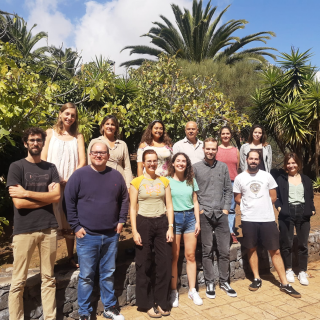Bibcode
Pandya, Viraj; Zhang, Haowen; Huertas-Company, Marc; Iyer, Kartheik G.; McGrath, Elizabeth; Barro, Guillermo; Finkelstein, Steven L.; Kümmel, Martin; Hartley, William G.; Ferguson, Henry C.; Kartaltepe, Jeyhan S.; Primack, Joel; Dekel, Avishai; Faber, Sandra M.; Koo, David C.; Bryan, Greg L.; Somerville, Rachel S.; Amorín, Ricardo O.; Arrabal Haro, Pablo; Bagley, Micaela B.; Bell, Eric F.; Bertin, Emmanuel; Costantin, Luca; Davé, Romeel; Dickinson, Mark; Feldmann, Robert; Fontana, Adriano; Gavazzi, Raphael; Giavalisco, Mauro; Grazian, Andrea; Grogin, Norman A.; Guo, Yuchen; Hahn, ChangHoon; Holwerda, Benne W.; Kewley, Lisa J.; Kirkpatrick, Allison; Kocevski, Dale D.; Koekemoer, Anton M.; Lotz, Jennifer M.; Lucas, Ray A.; Papovich, Casey; Pentericci, Laura; Pérez-González, Pablo G.; Pirzkal, Nor; Ravindranath, Swara; Rose, Caitlin; Schefer, Marc; Simons, Raymond C.; Straughn, Amber N.; Tacchella, Sandro; Trump, Jonathan R.; de la Vega, Alexander; Wilkins, Stephen M.; Wuyts, Stijn; Yang, Guang; Yung, L. Y. Aaron
Bibliographical reference
The Astrophysical Journal
Advertised on:
3
2024
Journal
Citations
44
Refereed citations
30
Description
The 3D geometries of high-redshift galaxies remain poorly understood. We build a differentiable Bayesian model and use Hamiltonian Monte Carlo to efficiently and robustly infer the 3D shapes of star-forming galaxies in James Webb Space Telescope Cosmic Evolution Early Release Science observations with $\mathrm{log}{M}_{* }/{M}_{\odot }=9.0\mbox{--}10.5$ at z = 0.5–8.0. We reproduce previous results from the Hubble Space Telescope Cosmic Assembly Near-infrared Deep Extragalactic Legacy Survey in a fraction of the computing time and constrain the mean ellipticity, triaxiality, size, and covariances with samples as small as ∼50 galaxies. We find high 3D ellipticities for all mass–redshift bins, suggesting oblate (disky) or prolate (elongated) geometries. We break that degeneracy by constraining the mean triaxiality to be ∼1 for $\mathrm{log}{M}_{* }/{M}_{\odot }=9.0\mbox{--}9.5$ dwarfs at z > 1 (favoring the prolate scenario), with significantly lower triaxialities for higher masses and lower redshifts indicating the emergence of disks. The prolate population traces out a "banana" in the projected $b/a\mbox{--}\mathrm{log}a$ diagram with an excess of low-b/a, large- $\mathrm{log}a$ galaxies. The dwarf prolate fraction rises from ∼25% at z = 0.5–1.0 to ∼50%–80% at z = 3–8. Our results imply a second kind of disk settling from oval (triaxial) to more circular (axisymmetric) shapes with time. We simultaneously constrain the 3D size–mass relation and its dependence on 3D geometry. High-probability prolate and oblate candidates show remarkably similar Sérsic indices (n ∼ 1), nonparametric morphological properties, and specific star formation rates. Both tend to be visually classified as disks or irregular, but edge-on oblate candidates show more dust attenuation. We discuss selection effects, follow-up prospects, and theoretical implications.
Related projects

Traces of Galaxy Formation: Stellar populations, Dynamics and Morphology
We are a large, diverse, and very active research group aiming to provide a comprehensive picture for the formation of galaxies in the Universe. Rooted in detailed stellar population analysis, we are constantly exploring and developing new tools and ideas to understand how galaxies came to be what we now observe.
Anna
Ferré Mateu